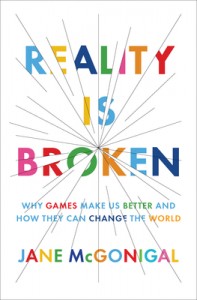All the promise in the world hasn’t yet translated into digital books truly taking advantage of all of the affordances of the digital canvas. I keep waiting, and waiting. Honestly, I am not sure exactly what I am waiting for but, like the famous expression about pornography, “I’ll know it when I see it” or I will know it when I experience it. I hope.
The Fantastic Flying Books of Mr. Morris Lessmore is an interactive book on the iPad that comes pretty darn close. It’s beautifully designed; it draws the reader in with both the story and the interactive elements; and when you first read it, the next thing on your agenda will be to read it again. And again. Trust me. We can’t keep the iPad and Morris Lessmore out of our kids’ hands — and they range in age from 7 to 13. The writers and creators of this beautiful story have done it right — from the ways in which the reader can play music, to creating a swipe of blue across the grey sky, to the animation, to the ways the books in the library read the first lines of famous novels; to the story itself (about the wonderful magic of books that we read and the stories that we write, and how those stories linger on even after we die). Each page holds a little treasure to be savored.
I wish there were more books out there like The Fantastic Flying Books of Mr. Morris Lessmore. Why aren’t there? It may be that the confluence between design (so important) and rich storytelling have not yet found enough common ground. It seems like most ebooks are really just games disguised as books instead of books as an immersive experience. Kudos to the group that pulled this book together. And I wait for the next one.
Peace (in the interactive),
Kevin
